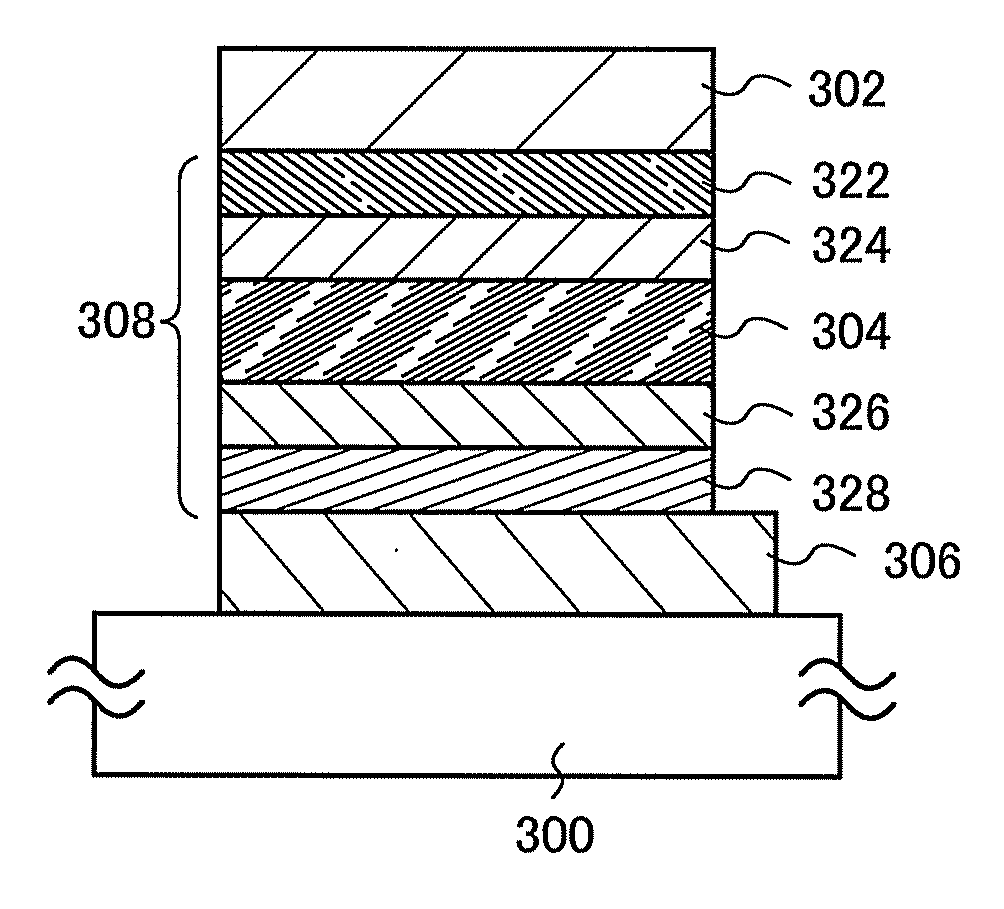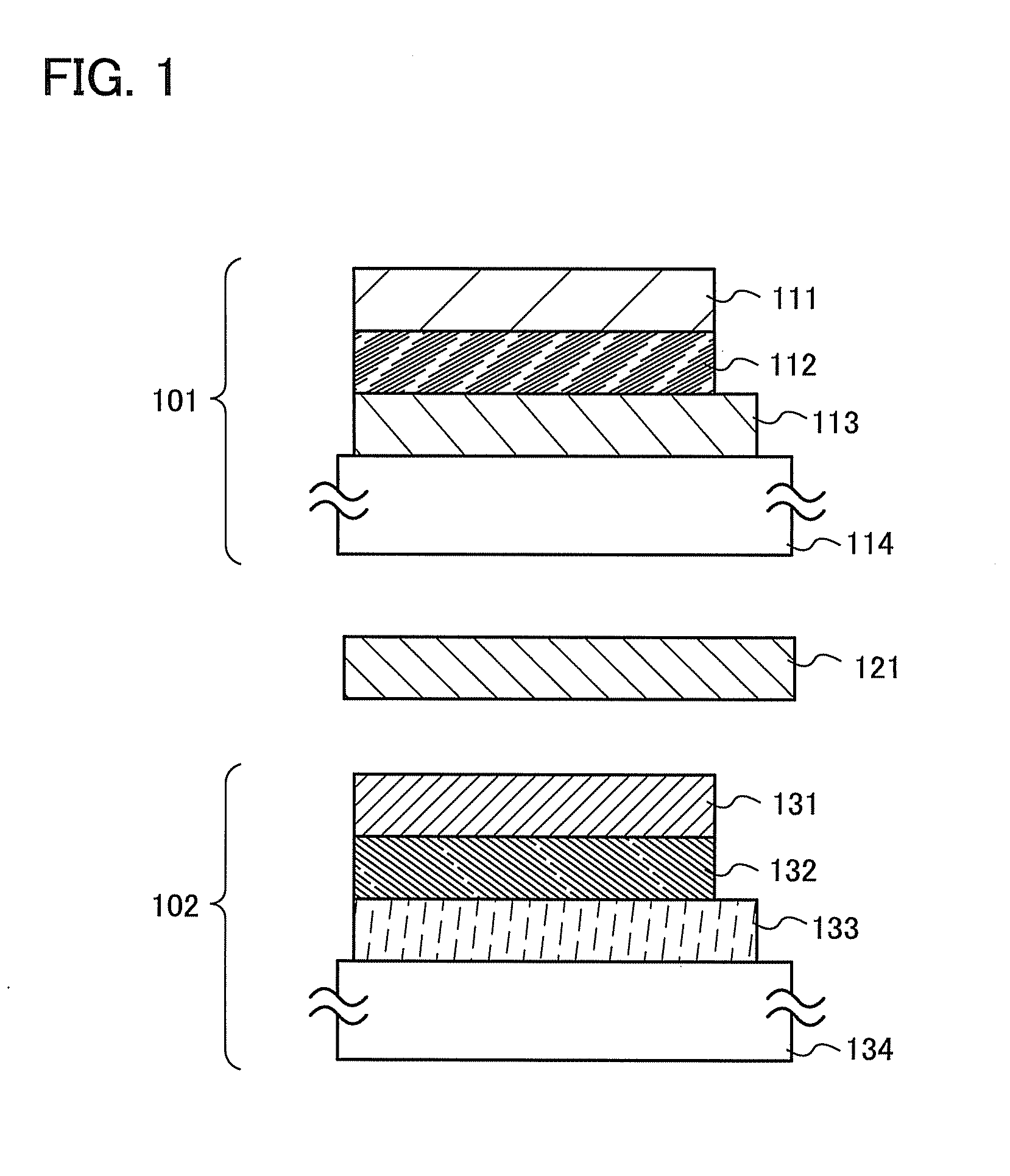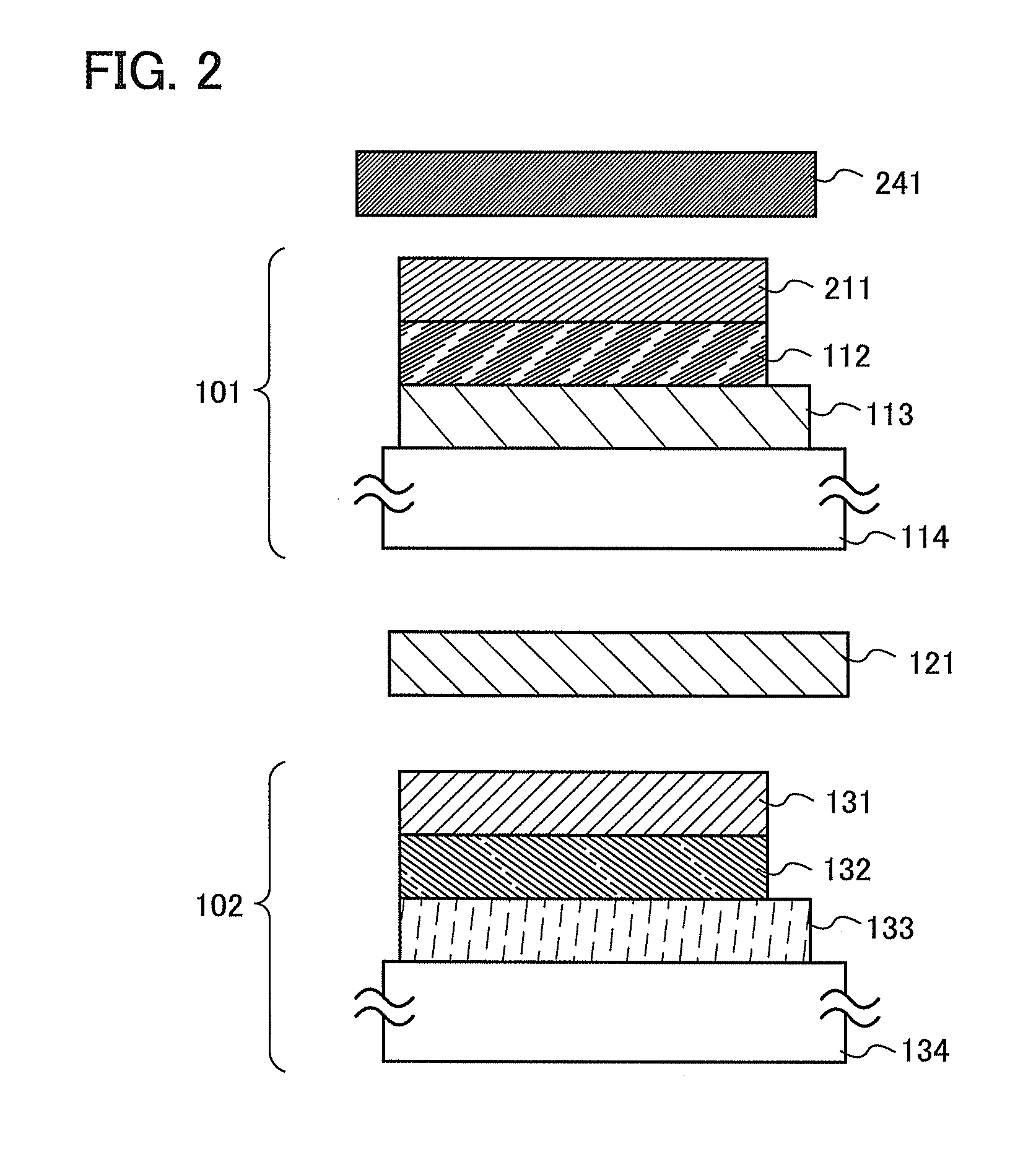Light-Emitting Device
a light-emitting device and light-emitting technology, which is applied in the direction of solid-state devices, electric lighting sources, and light-emitting properties of organic el elements, can solve the problems of low transmittance to visible light rays, disadvantages that are noticeable in short wavelengths, and light-emitting devices that cannot show the color of light-emitting with good color rendering properties, etc., to achieve low emission characteristics, short life, and high efficiency
- Summary
- Abstract
- Description
- Claims
- Application Information
AI Technical Summary
Benefits of technology
Problems solved by technology
Method used
Image
Examples
embodiment 1
[0031]A light-emitting device according to one embodiment of the present invention will be described with reference mainly to FIG. 1. FIG. 1 is a cross-sectional view illustrating a basic structure of the light-emitting device. FIG. 2 illustrates an example in which the light-emitting device is partly modified. In this specification, an organic EL element refers to a component that has an organic EL layer serving as a light-emitting region between a pair of electrodes and emits light by application of a voltage between the electrodes. In addition, a light-emitting device refers to a component that emits mixed color light using at least one such organic EL element.
[0032]In FIG. 1, a first organic EL element 101 includes a reflective electrode 111, an electrode 113 having a property of transmitting visible light rays, and an organic EL layer 112 therebetween. Further, a second organic EL element 102 includes a pair of electrodes 131 and 133 having a property of transmitting visible li...
embodiment 2
[0042]A light-emitting device according to one embodiment of the present invention will be described using FIG. 3. FIG. 3 is a cross-sectional view illustrating a basic structure of the light-emitting device including a light-emitting diode and an organic EL element.
[0043]In the light-emitting device illustrated in FIG. 3, the first organic EL element 101 illustrated in FIG. 1 is replaced with a light-emitting diode 301. Since the light-emitting diode has a long lifetime which might exceed 100,000 hours, it can provide a light-emitting device having a longer lifetime by being used in combination with the organic EL element. Since the light-emitting diode is nearly a point light source unlike the organic EL element, light with a higher luminance can be obtained by arrangement of light-emitting diodes in a matrix.
[0044]Light emission from the light-emitting diodes arranged in a matrix is not limited to having a single color, and can have a variety of colors. The light emission from th...
embodiment 3
[0046]In this embodiment, a method of forming an organic EL element applicable to one embodiment of present invention will be described.
[0047]For example, organic EL elements illustrated in FIGS. 4A and 4B can be fabricated. In the organic EL element illustrated in FIG. 4A, a first electrode layer 302, an EL layer 308 which serves as a light-emitting layer 304, and a second electrode layer 306 are sequentially stacked over a substrate 300. One of the first electrode layer 302 and the second electrode layer 306 functions as an anode, and the other functions as a cathode. Holes injected from the anode and electrons injected from the cathode recombine in the light-emitting layer 304, whereby light emission can be obtained. In this embodiment, the first electrode layer 302 functions as an anode and the second electrode layer 306 functions as a cathode.
[0048]In the organic EL element illustrated in FIG. 4B, a hole-injection layer, a hole-transport layer, an electron-transport layer, and ...
PUM
 Login to View More
Login to View More Abstract
Description
Claims
Application Information
 Login to View More
Login to View More - R&D
- Intellectual Property
- Life Sciences
- Materials
- Tech Scout
- Unparalleled Data Quality
- Higher Quality Content
- 60% Fewer Hallucinations
Browse by: Latest US Patents, China's latest patents, Technical Efficacy Thesaurus, Application Domain, Technology Topic, Popular Technical Reports.
© 2025 PatSnap. All rights reserved.Legal|Privacy policy|Modern Slavery Act Transparency Statement|Sitemap|About US| Contact US: help@patsnap.com



